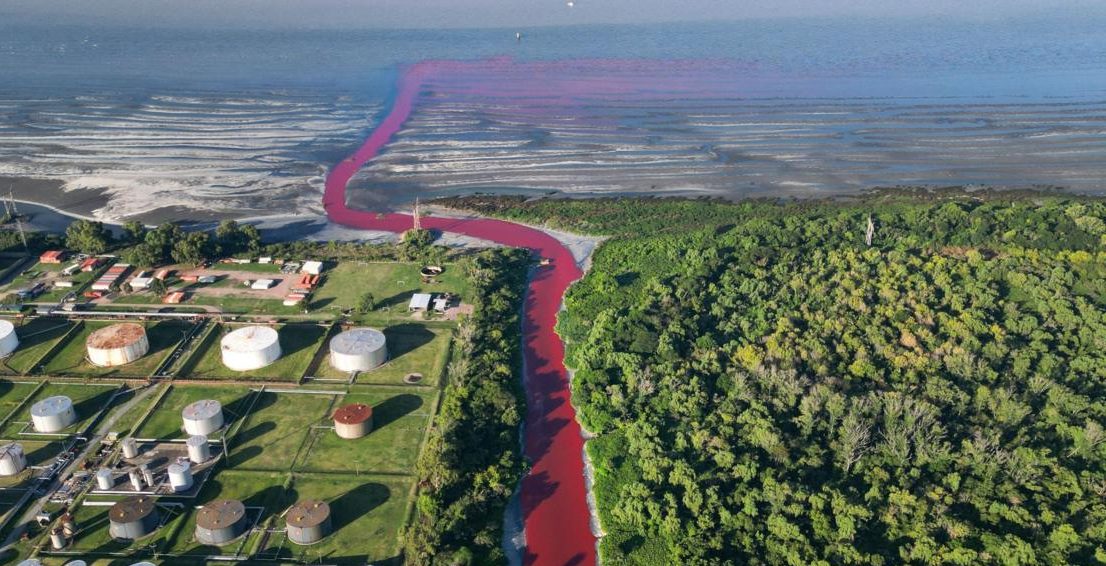
Residents of Avellaneda, a suburb of Buenos Aires, awoke to a shocking sight this week: the Sarandí Canal had transformed into a blood-red stream, sparking immediate fears of industrial pollution. The Argentina red canal mystery has gripped the nation, with officials scrambling to determine if toxic chemicals or organic dyes caused the alarming discoloration.
The Shocking Transformation of Sarandí Canal
On February 6, 2025, drone footage captured the Sarandí Canal’s crimson waters flowing into the Río de la Plata, a critical estuary bordering an ecological reserve. The canal, located near Villa Inflamable—a district notorious for tanneries and chemical plants—turned a vivid vermilion overnight, with residents reporting a “nauseating smell like garbage”.
María Ducomls, a local resident for over 30 years, described the scene as apocalyptic: “It looked like a river covered in blood. We’ve never seen it like this”.
Residents Sound Alarm Over Pollution
The Argentina red canal mystery is not an isolated incident. For decades, Sarandí’s waterways have shifted colors—from bluish-green to violet and even oily brown—due to unchecked industrial waste. Silvia, a resident living a block from the canal, recalled past horrors: “Other times, the water was yellow with an acidic smell that burned our throats”.
Locals blame factories and tanneries for dumping toxic substances like aniline, a chemical used in dyes and medicines. “You don’t need to be an inspector to see how polluted this canal is,” Ducomls told AFP
Investigations Point to Industrial Dye or Aniline
The Buenos Aires Environment Ministry swiftly collected water samples, suspecting the red hue stemmed from “organic dye”. However, Avellaneda officials raised concerns about aniline contamination, a toxic compound linked to leather processing.
Carlos Colángelo, president of the Professional Council of Chemistry for Buenos Aires, condemned potential polluters: “Any company dumping this is unscrupulous. No chemical professional would allow such waste”.
A History of Environmental Neglect
The Argentina red canal mystery underscores systemic failures. The Matanza-Riachuelo River basin, dubbed one of Latin America’s most polluted waterways, has long suffered from lax regulation. Moira Zellner, an environmental policy expert, criticized the “chronic lack of enforcement” enabling industrial violations.
Residents have filed complaints since the 1990s, but open contamination cases linger. “The populations here are suffering,” Zellner added.
What’s Next for the Red Canal?
By late Thursday, the canal’s color faded, though test results remain pending. Authorities vowed to prosecute offenders, but activists demand long-term solutions. “This isn’t just about red water—it’s about lives at risk,” said Ducomls.
Experts urge stricter oversight and investment in wastewater treatment. As the Argentina red canal mystery unfolds, it serves as a stark reminder of the human cost of environmental neglect.

